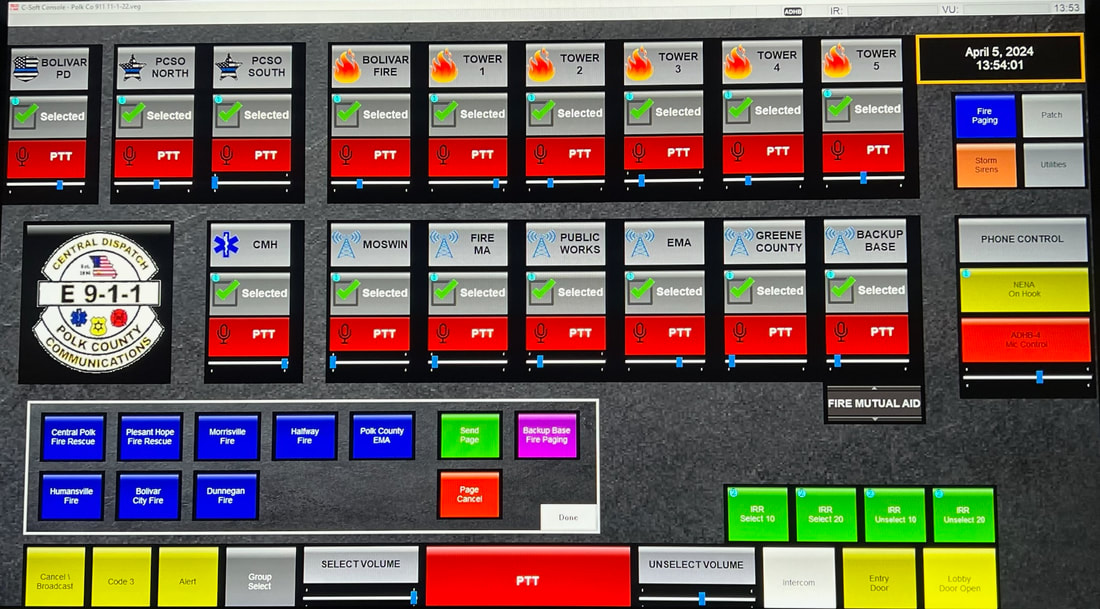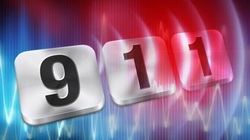911 Call Comes In

The emergency number 911 can be dialed from any telephone and will go directly to the PSAP (Public Safety Answering Point) where special computers and monitors display the location and phone number where the 911 call originated. A typical 911 ANI/ALI (Automatic Number Identifier/Automatic Location Identifier) display will provide the phone number, address, apartment or lot number (if necessary) and the name of the telephone service subscriber.
(NOTE: Cellular Phones will not display your address, they will only display the location of the tower your phone is reaching, and may or may not display your phone number, so make sure you have that information to pass along to the dispatcher.)
(NOTE: Cellular Phones will not display your address, they will only display the location of the tower your phone is reaching, and may or may not display your phone number, so make sure you have that information to pass along to the dispatcher.)
The Call Taker Processes Information

The 911 Call taker will ask a series of questions in order to route the most appropriate Emergency resources to your location. This information is entered into our Computer Aided Dispatch Software (CAD) while the caller is still on the line, and can be viewed by other dispatchers in the center. Some questions that a call taker may ask include:
It is important to remember that these questions are not delaying the emergency response! Help is being sent even while you are talking to us. In order for us to help you, you must help us obtain all the necessary information to process the call. From this point the dispatcher may ask a series of questions directed to the status of the patient and offer medical intervention as to how you as the caller can aid the patient. Always attempt to be as calm as possible, you are an important part of providing help to those in need.
- What is your emergency?
- What is the location of the emergency? (address, street name, house/apartment number)
- When did this happen?
- What is your name?
- What is the phone number you are calling from?
- How many patients?
- What is on fire?
- Do you need a law enforcement officer?
- Is the patient conscious?
- Can you get out of the house?
- Are you in immediate danger?
- Is the patient breathing? Normally?
- Are there any other problems with the patient?
- Suspect description?
- Vehicle description?
- License number?
- Suspect's direction of travel?
- Did you see any weapons?
- How many suspects?
It is important to remember that these questions are not delaying the emergency response! Help is being sent even while you are talking to us. In order for us to help you, you must help us obtain all the necessary information to process the call. From this point the dispatcher may ask a series of questions directed to the status of the patient and offer medical intervention as to how you as the caller can aid the patient. Always attempt to be as calm as possible, you are an important part of providing help to those in need.
Call is Dispatched to Appropriate Agencies

The 911 call is then dispatched by another dispatcher to appropriate agencies. As previously stated, it is very important that you remain calm and listen to the dispatcher for further instructions, as well as answer all questions they may ask to the best of your abilities. Your call is often dispatched and Emergency crews are responding before you even hang up the phone. The additional information gained from the questions you answer is passed along to these units so they are better prepared to respond to your emergency.
Additional Instructions are Given

While emergency units are responding to your emergency, you may be given additional instructions such as how to perform CPR, the Heimlich maneuver, bleeding control. Listen carefully to the dispatchers instructions, these are given to help stabilize the emergency. Remember that we can't see what is going on, so do your best to remain calm and do what the dispatcher asks, it can save a life. Depending on the situation, the dispatcher may disconnect or stay on the line to monitor the situation and update emergency crews of changes while enroute to the emergency. Always try and keep yourself out of harms way, do not put yourself in an unsafe situation that could cause harm to yourself or others.
IF THE SITUATION WORSENS, CALL BACK IMMEDIATELY FOR FURTHER INSTRUCTIONS!
IF THE SITUATION WORSENS, CALL BACK IMMEDIATELY FOR FURTHER INSTRUCTIONS!